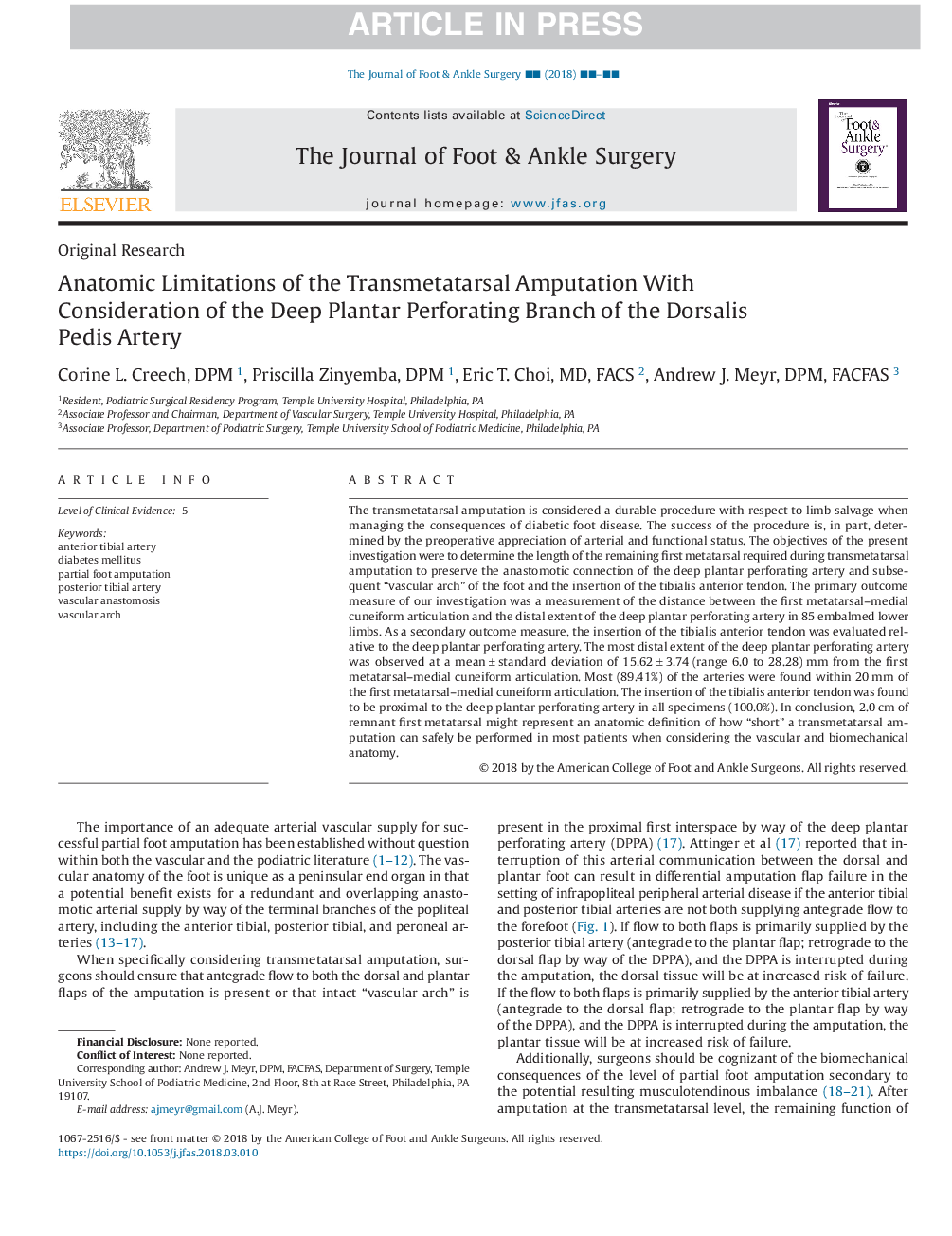| Article ID | Journal | Published Year | Pages | File Type |
|---|---|---|---|---|
| 8950707 | The Journal of Foot and Ankle Surgery | 2018 | 4 Pages |
Abstract
The transmetatarsal amputation is considered a durable procedure with respect to limb salvage when managing the consequences of diabetic foot disease. The success of the procedure is, in part, determined by the preoperative appreciation of arterial and functional status. The objectives of the present investigation were to determine the length of the remaining first metatarsal required during transmetatarsal amputation to preserve the anastomotic connection of the deep plantar perforating artery and subsequent “vascular arch” of the foot and the insertion of the tibialis anterior tendon. The primary outcome measure of our investigation was a measurement of the distance between the first metatarsal-medial cuneiform articulation and the distal extent of the deep plantar perforating artery in 85 embalmed lower limbs. As a secondary outcome measure, the insertion of the tibialis anterior tendon was evaluated relative to the deep plantar perforating artery. The most distal extent of the deep plantar perforating artery was observed at a meanâ±âstandard deviation of 15.62â±â3.74â(range 6.0 to 28.28)âmm from the first metatarsal-medial cuneiform articulation. Most (89.41%) of the arteries were found within 20âmm of the first metatarsal-medial cuneiform articulation. The insertion of the tibialis anterior tendon was found to be proximal to the deep plantar perforating artery in all specimens (100.0%). In conclusion, 2.0âcm of remnant first metatarsal might represent an anatomic definition of how “short” a transmetatarsal amputation can safely be performed in most patients when considering the vascular and biomechanical anatomy.
Keywords
Related Topics
Health Sciences
Medicine and Dentistry
Orthopedics, Sports Medicine and Rehabilitation
Authors
Corine L. DPM, Priscilla DPM, Eric T. MD, FACS, Andrew J. DPM, FACFAS,
